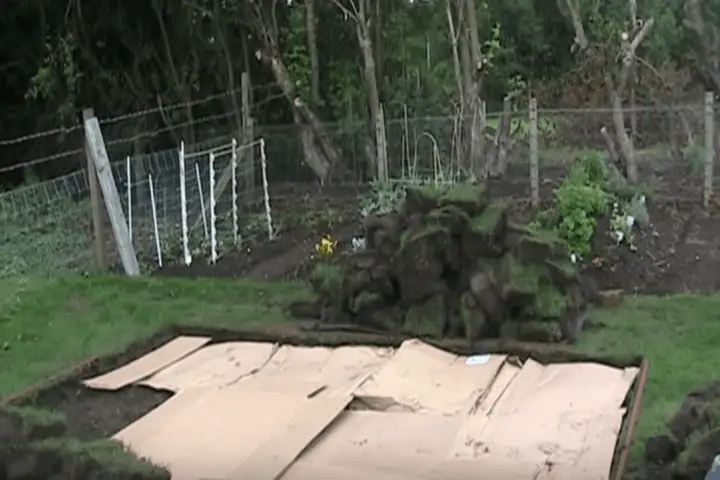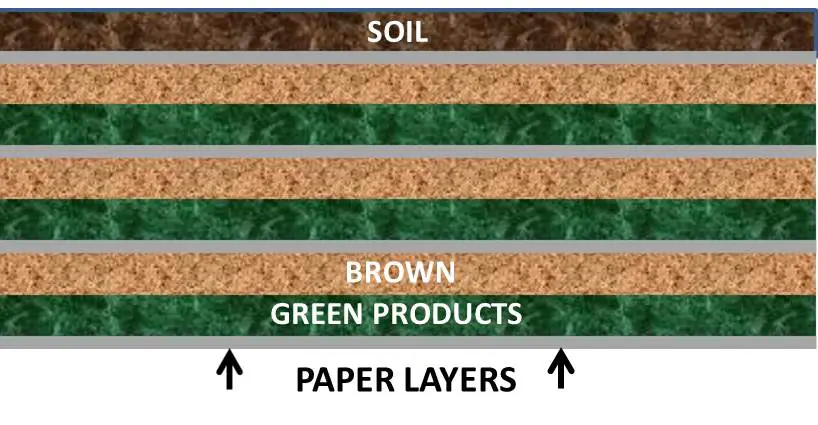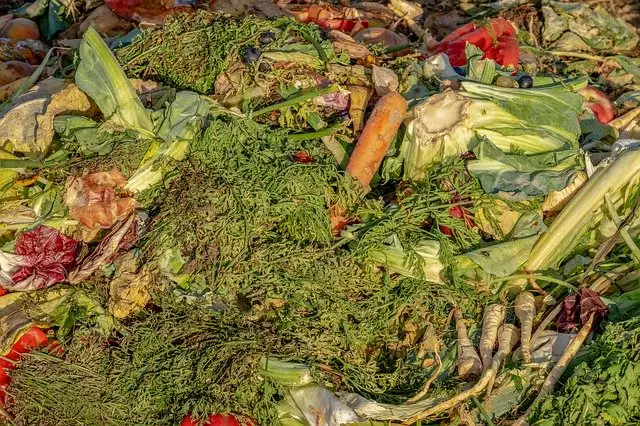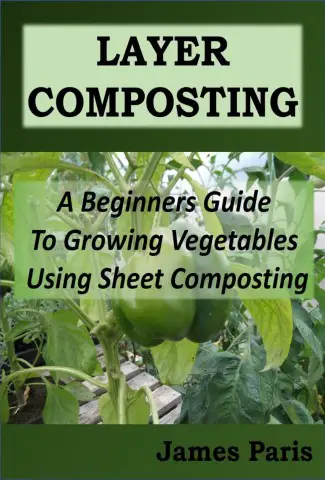lasagna Gardening is a no-dig gardening method where a growing area is made up by a layering process involving cardboard, compost, fallen leaves, vegetable kitchen scraps, and topped off with a layer of compost/soil mix to produce a nutrient rich area for growing vegetables.
It is also known as ‘layer composting’ or indeed ‘sheet composting’ all of which mean the same thing, and indeed produce the same excellent results – if they are well made!
To make a lasagna garden bed there is a simple series of steps to follow.
- Choose your growing area. It must be in full sun for at least 6 hours daily and not under overhanging trees, especially pine trees.
- Prepare the area by first adding a layer of cardboard or multiple layers of newspaper, soaking the paper so it lays flat.
- Over this lay 2-3 inch thick layers of organic material such as compost, fallen leaves, straw, grass cuttings, kitchen vegetable waste.
- Repeat this process 2 or 3 times until you have a bed 12-18 inches deep.
- Top off with a 4 inch layer of good compost/topsoil mix
That is the basic recipe/set-up for a lasagna garden. It can vary depending on what materials you have to hand, and indeed the particular conditions where you stay.

Don’t be afraid to experiment or to add other organic materials to the bed as you are layering-up such as broken egg shells, coffee grinds, banana skins, comfrey cuttings, stinging nettle cuttings (without roots on plants).
If you have access to well-rotted manure, then definitely add a layer to the mix. A good mixture that includes these materials will add the much needed nitrogen, potassium, phosphorus, and other less-needed minerals such as copper, magnesium, zinc, and iron, that your vegetables will need for strong healthy growth.
How Does A Lasagna Garden Work?
What you are trying to achieve when you build up your layers, is to create the perfect basis for nutrient-rich growing area for vegetables once it has composted down.
This includes layers of both ‘green’ and ‘brown’ material. Green material includes things like grass cuttings, cut weeds, vegetable trimmings. Brown material includes straw, cardboard, fallen leaves, sticks/twigs,
The brown material adds the bulk and carbon element to compost while the green material adds the nitrogen and other nuttrients. As this study shows , the introduction of organic nitrogen is essential for goor growth.
, the introduction of organic nitrogen is essential for goor growth.
The first layer of brown cardboard or newspapers dampened down is done not only to suppress weed growth coming through your lasagna bed, but also to attract worms that will in turn enhance the whole composting process.

As the combined materials rot down they convert into compost full of all the nutrients and minerals that your vegetables will love.
When can you plant vegetables?
Many people including myself, have had some success planting right after the lasagna garden has been constructed. However there is no doubt that better results are achieved if the that the whole thing is better built up in the late Fall, and planted out in the Spring.
It just makes common sense! If you construct your bed in the Fall you will have much more material to hand including fallen leaves and other garden debris to add to the layers.
The last lawn clippings of the season can also be added for nitrogen content. Hay and straw is readily available from the harvest of barley and wheat crops.
Layering in the Autumn means that the bed composting process will be well underway by Spring and the start of the growing season.
One other thing you have to keep in mind if you are planting right away is the heat that is built up in the early stages of plant decomposition.
This is the basis of Hot Bed gardening, and is another effective way to ‘steal a march’ and add another couple of months to your growing season. A hot bed garden can reach up to 150F (65C) in the center of the bed, so care must be taken that your plant roots do not get effectively cooked!

To avoid the possibility of cooking your young seedlings – if indeed you want to plant your lasagna bed right away – make sure you have at least 4 inches of topsoil on top of the layers. This will restrict the heat but at the same time warm the bed enough for an early planting.
Try A Raised Bed Lasagna Garden
This is simply a traditional Raised bed system that is filled in using the lasagna gardening method. In many ways this is easier to manage as it is contained within definite boundaries.
It can be built deeper, even following some of the principles of a Hugel Bed garden where you can add piles of old tree cuttings to the base of the bed to bulk it up and add the ‘brown’ material needed.
It also has the benefits of a Raised bed system in that it is at a better height to manage and tend throughout the season.

